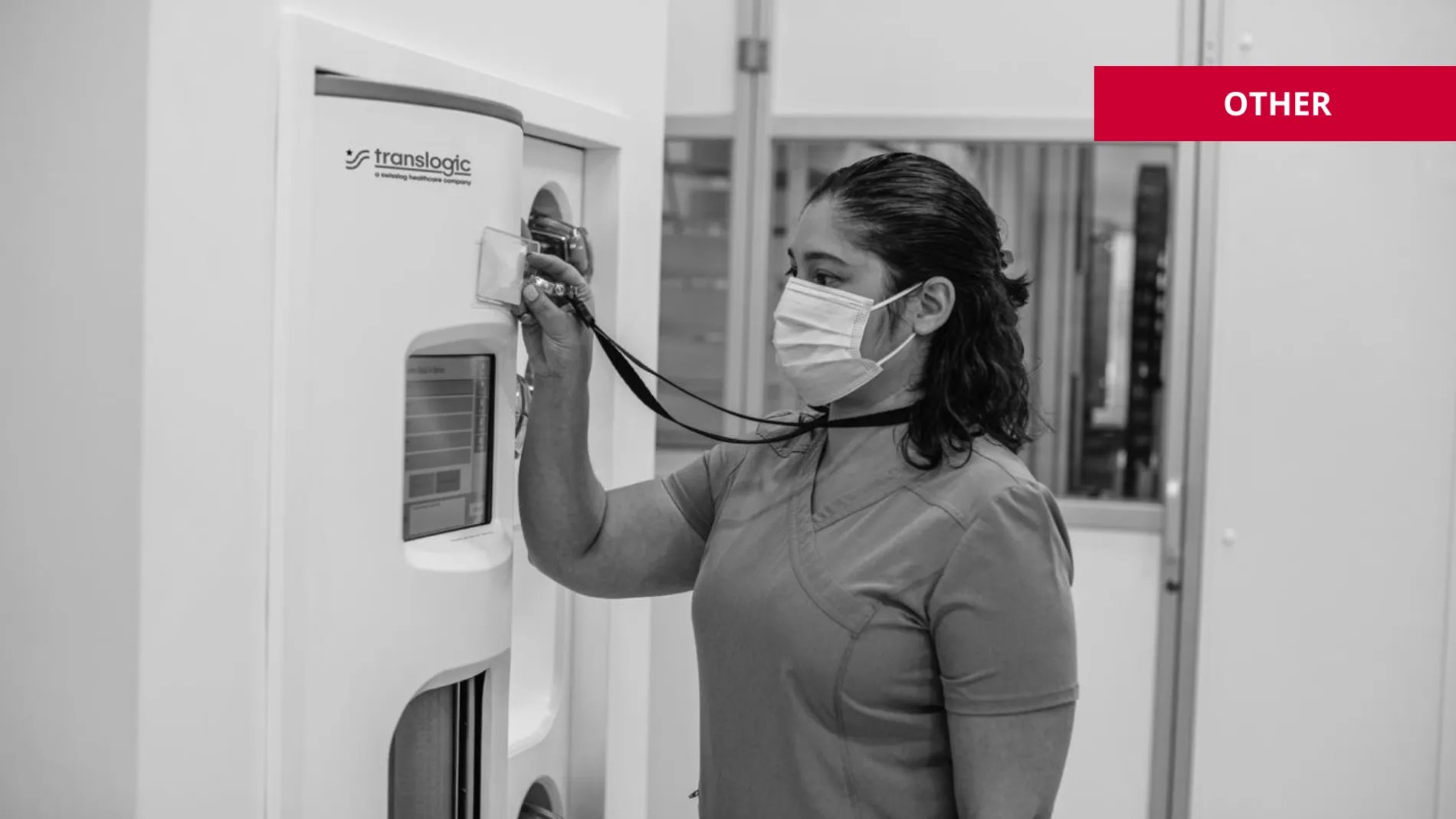You might also be interested in this


Security Is a Top Priority
Reading Time: 5 min.
3/7/2024
Healthcare is one of today’s most tightly regulated industries, and for a good reason. In addition to the multiple protocols that govern patient care, there is an abundance of sensitive patient data being stored and transported every day. And the sheer amount of data is increasing as technology evolves to capture more of it. Whether it’s a healthcare system or one of thousands of healthcare product vendors, patient records security is critical to doing business in this industry.
This creates a challenging balancing act for companies in their ongoing efforts to safeguard data, while facilitating access to data such as patient records.
Furthermore, hackers have become more sophisticated, which means that patient records are more susceptible than ever to being stolen and used for profit. According to the latest Cost of a Data Breach Report, covering March of 2022 through March 2023, healthcare accounted for the highest data breach at $10.93 million. The average cost of a data breach in 2022 was $499 per record. And these patient records can be sold by hackers for well over $1,000 each!
Protection of patient records and maintaining a secure information infrastructure is paramount to being able to serve an ever-growing base of patients and to provide care in ways that optimize privacy as well as outcomes. This dynamic environment continues to test our ability for the healthcare industry to continue to be able to assure patients and their families that patient data security is well covered.
That’s why we need standards.
The more stringent they are, the more confidence we have in our healthcare providers and partners in a world where data has never been more prolific and more instrumental to providing care.
Demonstrating healthcare security compliance is typically achieved by meeting rigorous standards set by the industry. Compliance takes the form of certifications that healthcare providers and trade partners can obtain that indicate they are securing data that is collected and used by their systems.
Keeping track of and maintaining multiple healthcare certifications can be challenging.
One certification that is being increasingly adopted in the healthcare industry is HITRUST.
Since its inception, 81% of hospitals and healthcare systems and 83% of health plans have leveraged HITRUST.
One aspect of HITRUST that gives it an advantage over other certifications is that it has rolled several of them into its program, including the ones cited above.
Let’s take a look at this all-inclusive certification, how it is used, who is becoming certified, what certification involves, and what it means for the future of patient data security in the healthcare industry.
Developed in 2007, HITRUST is a compliance framework that continues to evolve and expand to address advances in technologies. It addresses the patient data security risks associated with the ability to do more with data both in terms of access, integration, and use of artificial intelligence (AI) to refine the data.
The HITRUST CSF, its certifiable framework, takes a more comprehensive approach to regulatory compliance by providing several structural advantages, namely transparency and standardization, in a manner that promotes consistency and clarity.
HITRUST is to many considered the gold standard in providing security of healthcare data.
There are several reasons for this:
If you provide services or products in the healthcare industry, you have undoubtedly felt the impact of overlapping regulations and controls that are the result of a variety of different, though often interrelated laws.
For many healthcare systems, this can create certification challenges as it is important to cover all bases so that they can say with assurance that their data is always secure. Achieving this level of assurance requires a concentrated effort to achieve multiple, often overlapping certifications.
To demonstrate the highest levels of healthcare security compliance across a broad spectrum of measures is for many the impetus behind turning to HITRUST. As a single compliance framework that encompasses multiple certifications, organizations can focus the combined efforts of their team in a single more powerful certification effort.
And that effort is needed, because HITRUST is an all-encompassing certification platform which requires a dedicated, well-orchestrated effort from start to finish – it’s a process that can take years to complete.

The rationale behind HITRUST is to identify areas where an organization may be vulnerable to security breaches and correct them to comply with the most stringent safety requirements. The program comprises nineteen “domains”, or control areas, which cover a broad range of security protocols, including areas such as network protection, mobile device security, access control, data protection and privacy, and risk management, among others. Once an organization’s vulnerabilities are identified, they must then address each issue and make corrections. Everything observed must be carefully documented. Then the final certification process occurs.
HITRUST provides three levels of assessment: e1 is considered entry-level, i1 is intermediate, and r2 is the most comprehensive level of security protection. Regardless of the level pursued, the assessment process can be broken down as follows:
But an organization’s commitment to HITRUST doesn’t stop there. Every year all companies must reassess to ensure ongoing compliance and maintain their HITRUST certification.
There are several factors that will make data security more challenging in the years to come. AI (artificial intelligence) is using highly sensitive patient data to build a more accurate analysis of each patient’s health status, help them to better self-assess their own health, and provide clinicians with tools to treat health issues more proactively. Platforms and applications are accruing more data from multiple systems to enable machine learning and other applications of AI. More data brings with it the potential for data breaches. Being able to mitigate the risks associated with a deeper bench of data is key to survival and success in all healthcare environments. It also represents a commitment to maintaining the security of patient healthcare records, which is more important today than ever.
Whether it is HITRUST or one or more other healthcare certifications, the process should be taken seriously. Each has its own set of procedures that must be followed prior to attaining compliance. This is particularly important for HITRUST certification. We know, because our team at TransLogic has gone through the process, and we are proud to be HITRUST r2 certified. We recognize, however, that the time and commitment needed to attain HITRUST certification may not be feasible for every company. Before beginning the process, a thorough evaluation and much discussion internally should occur. All team members must be on board and working together.
Understanding the impact of the certification process for each employee is critical as each of them will play a role in the process. Including them from the very beginning will help create a teamwork environment with all team members pulling together towards an important common goal.

Contact our knowledgeable specialists to discover how our range of automation solutions can boost efficiency, reduce costs and enhance care at your healthcare facility.
Contact us